Growing plants can be a tricky business, but with the right tools and knowledge, it can become an exciting journey. Philodendron is one of those plants that just seem to thrive in water, and if you’re looking for something easy yet beautiful to add to your home then this might be a perfect choice! In this article, we’ll dive into how to grow Philodendron in water, from getting started all the way through harvesting. It’s like opening up a secret garden door—once you get going, there’s no stopping you!
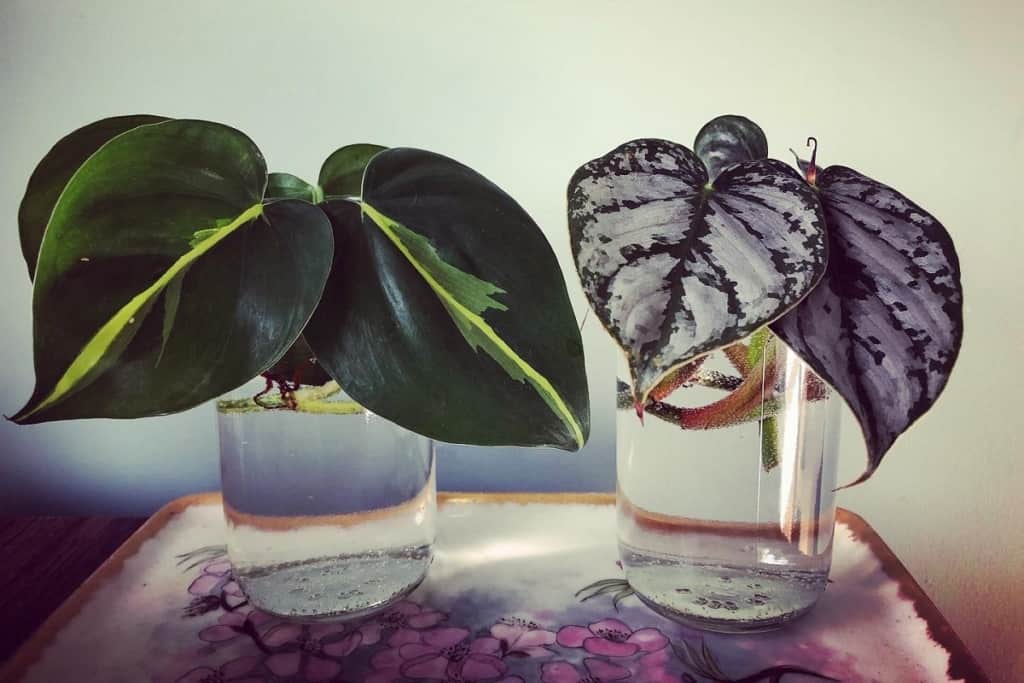
Contents
- 1 How To Grow Philodendron In Water
- 2 How To Care For Philodendron In Water
- 3 Frequently Asked Questions
- 3.1 Can Philodendron Grow In Just Water?
- 3.2 Why Is My Philodendron Dying In Water?
- 3.3 How Long Can A Philodendron Live In Water?
- 3.4 Why Is My Philodendron In Water Leaves Turning Yellow?
- 3.5 How Long Do Philodendron Cuttings Take To Root In Water?
- 3.6 Is It Better To Propagate Philodendron In Soil Or Water?
- 3.7 How Do You Transfer Philodendron From Water To Soil?
- 4 Conclusion
How To Grow Philodendron In Water
1. Choose a healthy philodendron plant
When selecting a mother plant, look out for aerial roots—these are an indication of good health. The best plants also have lush green leaves and stems that are firm but flexible when touched gently.
If you find one with brown spots or yellowing foliage, it may be better to pass on it; choose another instead as those signs could indicate sickness or disease. To ensure optimal growth, make sure the chosen plant has no pests or diseases.
2. Remove the bottom leaves
Now that you have your starter plant it’s time to get started! The next step is to remove the bottom leaves. This will help promote new growth and make sure your cutting has an optimal start. To do this, grab a sharp knife or pair of scissors and carefully snip off the lower leaves. Be careful not to damage any stems when removing these leaves as they are important for successful propagation.
3. Cut the stem at an angle
This ensures more surface area for the roots to grow into and also encourages growth toward the light. When cutting, include at least one leaf node—this will help nourish the new root system.
4. Put in water
After cutting the stem of the plant at an angle, fill a glass with water and place the stem in it.
5. Place in a bright spot
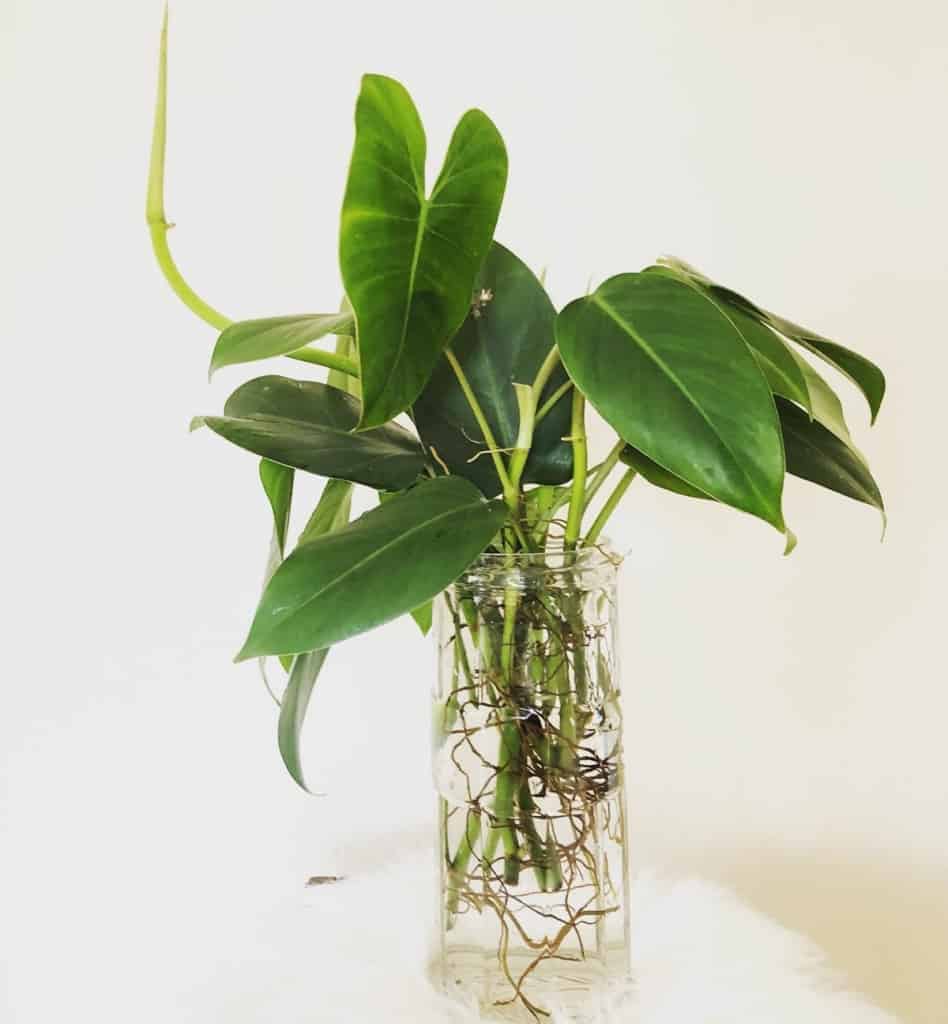
It’s important to ensure that the Philodendron will get enough sunlight while growing in water—direct sunlight may be too intense for it, but indirect sunlight should work just fine. Make sure there’s enough light during its growth period
If placed near a window, check periodically if any leaves are getting burned by direct sun rays as they may need to be moved after some time.
When positioning your philodendron, however, don’t forget about temperature control! Make sure that the area isn’t too hot during the summer months as this could cause damage to its leaves and root system. Be mindful of balancing both light and warmth when selecting an ideal location for your plant—now you’ll have a happy, healthy philodendron with plenty of room for growing strong!
6. Add fertilizer every 2 weeks
Adding fertilizer to the water every 2 weeks will help provide all the nutrients needed by your philodendron plant to thrive. Without adequate nutrition, it won’t reach its full potential or grow as tall as it could otherwise.
When selecting a fertilizer, look for one specifically designed for houseplants like philodendrons; general-purpose fertilizers may contain too much nitrogen which can damage delicate roots.
Additionally, make sure to dilute the solution according to instructions before adding it to the glass of water containing your stem—overfertilizing can cause serious issues with both root health and leaf growth on your philodendron.
7. Replace the water often
Remember to replace the fresh water every few days or whenever it starts looking cloudy. Also, keep that water level nice and high enough to cover its roots. This way, the roots will not dry out and will be able to soak up nutrients and stay healthy.
How To Care For Philodendron In Water
When caring for philodendrons in water, it is important to ensure that the water is kept clean at all times. Change the water every few days to prevent an accumulation of minerals or debris which can be harmful to the plant. Additionally, the water should be at room temperature to avoid stressing the plant.
You can add a few drops of liquid fertilizer to the water to help ensure that the plant is getting the nutrients it needs. Finally, make sure the water level is high enough to reach the stem of the philodendron, as this is where the root system will develop.
Frequently Asked Questions
Can Philodendron Grow In Just Water?
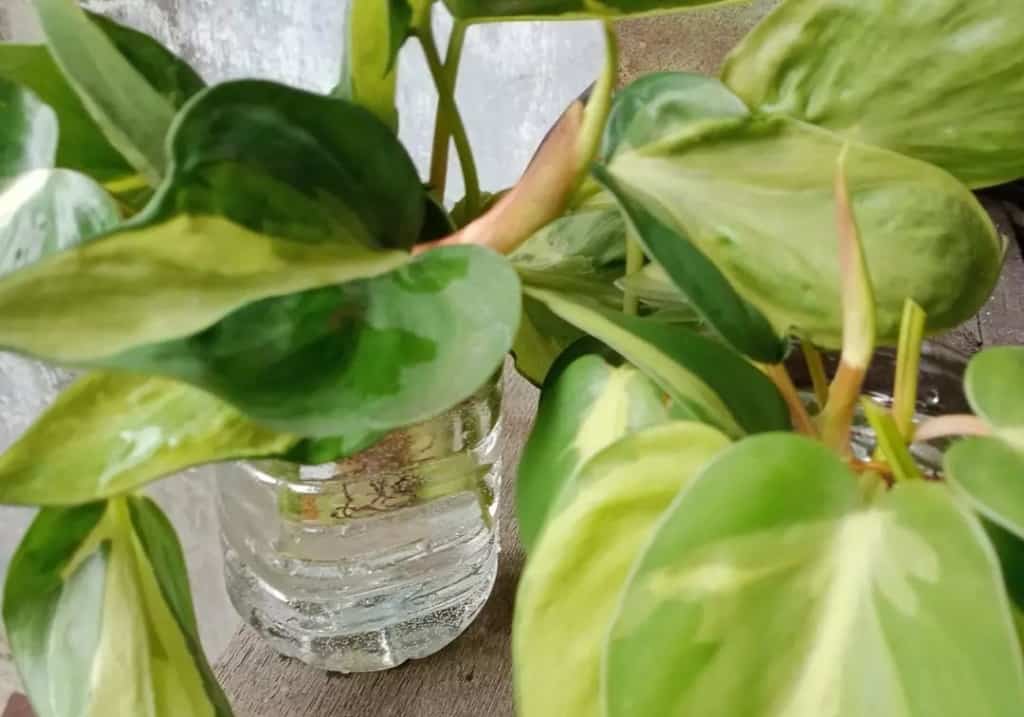
It’s easy to see why so many people are interested in growing philodendrons in water. After all, the idea of a low-maintenance houseplant is quite appealing! But can you really grow philodendrons in just water? Let’s take a closer look and find out.
First, it’s important to understand that while it is possible for philodendrons to root and survive in just water, they will not thrive this way. While some species may be able to stay alive with no soil at all, most varieties will need soil or another type of media—like sphagnum moss—as well as air circulation and light exposure. Without these elements, your plant won’t flourish over time.
So if you’re looking for an easy way to care for your philodendron, keep in mind that although you may be able to get away with growing them solely in water, their chances of success are much higher when provided other essential factors too.
Why Is My Philodendron Dying In Water?
If your Philodendron has been submerged in water for too long, it could lead to root rot or other diseases caused by the lack of oxygen. To prevent this from happening again, make sure to change the water frequently. If the situation isn’t getting better, try repotting the plant into soil and providing more light and air circulation around its leaves. This will help give it an opportunity to recover from any potential damage done by drowning in water.
How Long Can A Philodendron Live In Water?
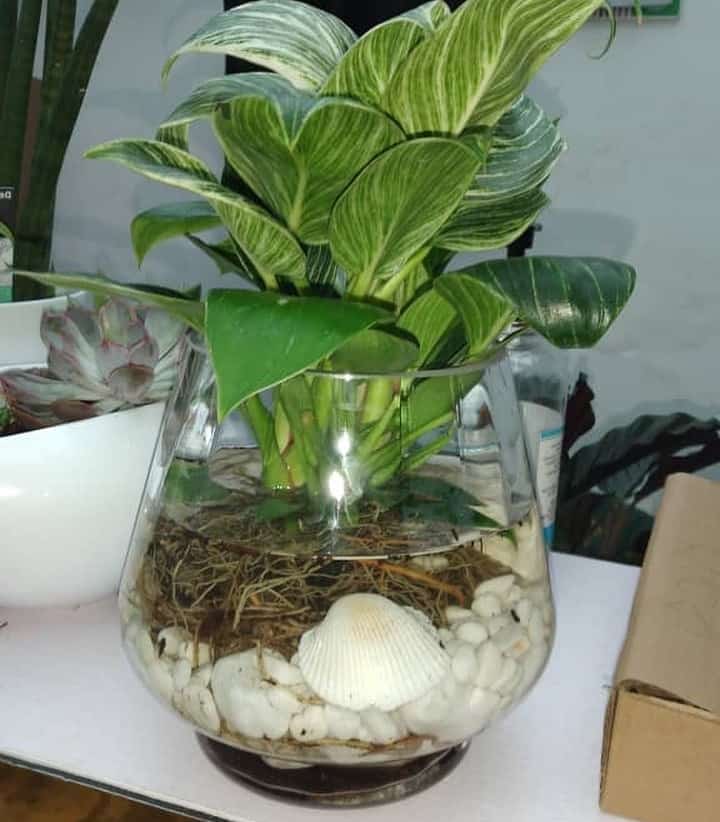
Have you ever wondered if it’s possible for a philodendron to live in water forever? It’s an incredible thought—the idea that a beautiful, green houseplant could stay alive without soil and light. But is it really possible? Can your philodendron actually survive for more than just a few days or weeks in water?
The answer might surprise you! While it may not be able to live forever in this habitat, your philodendron can have a surprisingly long life when grown correctly in water. With proper care and attention, you can keep your plant growing happily for several months or even years. You’ll need to make sure that you change the water regularly so that bacteria don’t build up and stunt its growth, but with regular maintenance, your philodendron should thrive.
You’ll also need to provide adequate nutrients such as fertilizer tablets or liquid; this will help ensure that your plant has all of the necessary vitamins and minerals it needs to grow strong roots and lush foliage. Additionally, make sure that there is enough fresh air circulating around the plant by occasionally opening nearby windows or using a fan on a low setting. This will help prevent mold from developing and further damaging your beloved houseplant. So while living in only water isn’t ideal for most plants, with proper care and dedication you can keep your philodendron happy and healthy for many months—maybe even years!
Why Is My Philodendron In Water Leaves Turning Yellow?
Oh no! Your precious philodendron is turning yellow, and you’re not sure why. It’s a heartbreaking sight to see the leaves of your beloved plant wilting away right in front of your eyes. You’ve put so much effort into growing it in water, but now its foliage looks like it could wither away any minute! What can you do?
The answer lies in understanding the needs of your philodendron. This type of houseplant thrives best when given ample sunlight, humidity and regular watering. When grown solely in water, these plants will often start to turn yellow due to a lack of nutrients or too little oxygen getting to their roots.
To avoid this issue, make sure that your philodendron has access to adequate light and a bit of air circulation from time to time—either by setting up an oscillating fan or just taking it outside for some fresh air every once in a while. Additionally, be sure to use filtered water with added fertilizer regularly as this helps provide essential minerals and vitamins that are otherwise lacking when growing in water alone. With proper care and attention, you’ll soon have your luscious green philodendron back again—happy and healthy!
How Long Do Philodendron Cuttings Take To Root In Water?
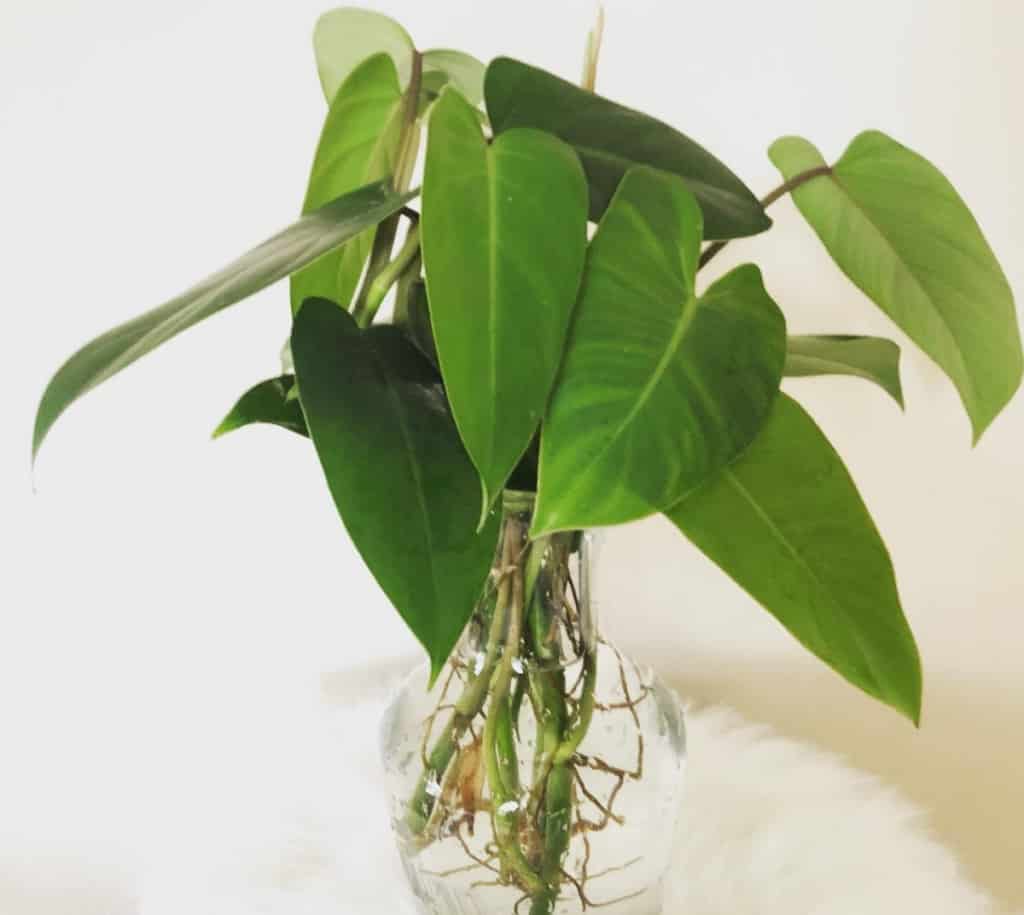
With patience and dedication, you can nurture your plants into healthy specimens with strong roots that will last many years. The time frame depends on several factors such as temperature, light exposure, and size of cutting. Generally speaking, most plants like philodendrons will form their first set of roots within 4–6 weeks when given proper conditions.
To begin the rooting process, make sure all leaves are removed from the lower portion of the stem before placing them in clean water. Change out the water every few days if possible to ensure bacteria don’t accumulate and inhibit growth. Additionally, make sure they’re getting plenty of indirect sunlight which helps stimulate new growth while keeping temperatures consistent (ideally between 65–80 degrees Fahrenheit). With these simple steps, you’ll have happy healthy plants growing in no time!
Is It Better To Propagate Philodendron In Soil Or Water?
When it comes to propagating a philodendron, the big question is whether it’s best to grow them in soil or water. Both methods have their pros and cons that can help you decide which one works for you. Let’s take a look at each option so you can determine what will work best for your plants.
One advantage of growing philodendrons in water is they don’t need as much maintenance as when grown in soil. You won’t need to worry about watering, repotting or fertilizing since the cuttings are submerged in liquid with nutrients. This makes caring for these plants simpler than if you were using potting mix or other media. Additionally, the process of rooting occurs faster when done in water compared to soil, so you’ll see growth sooner rather than later!
On the other hand, although it takes longer for cuttings to root in soil, there are greater rewards down the line. The roots become stronger over time due to more space available and better oxygenation from all sides. Furthermore, once rooted into soil, philodendrons produce larger leaves compared to those grown solely hydroponically—it’s almost like giving your plant an extra boost of energy! So if patience isn’t your strong suit but you still want healthier-looking foliage then this might be the route for you.
Ultimately, deciding between watering or planting your philodendron is up to personal preference and how much care and attention you’re willing to give them. Doing some research on both methods can give you an idea of which would work better based on your needs and lifestyle choices.
How Do You Transfer Philodendron From Water To Soil?
Do you have a philodendron that you’ve been growing in water and wondering if it’s time to transfer it over to soil? The transition from one medium to the other can be tricky, so let’s explore how we can do this together.
When transferring your philodendron from water to soil, it is important to take the time to ensure that you are handling the plant carefully. Firstly, make sure to use a soil mix that is well-draining and contains organic matter. Secondly, it is best to soak the soil in water for about half an hour before actually planting. This will help to soften the soil and make it easier for your plant to absorb the water it needs.
When you are ready to plant, make sure to gently cover the roots with soil and press down lightly around the plant. Finally, water your plant thoroughly and then place it in an area with indirect sunlight and keep the soil consistently moist. By following these steps, you can successfully transition your philodendron from water to soil.
Conclusion
In conclusion, growing philodendrons in water is a great way to propagate this beautiful plant. It’s simple and easy to do with the right supplies. When done correctly, you can have your own healthy philodendron thriving in no time! Remember that yellowing leaves could be an indication of too much or too little fertilizer. Make sure you’re adding the correct amount every two weeks for optimal growth.
Additionally, make sure when transferring from water to soil that you use a well-draining potting mix for best results. As they say, practice makes perfect—don’t get discouraged if it takes some trial and error before achieving success. With patience and persistence, I’m confident anyone can become a successful philodendron grower!
